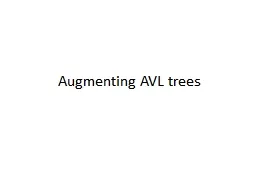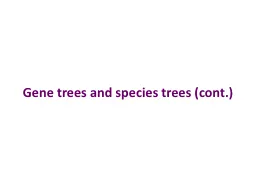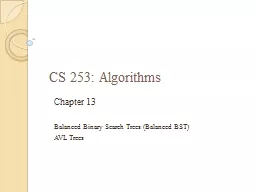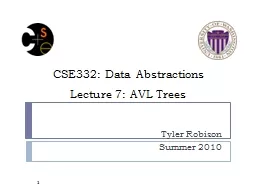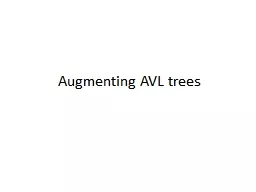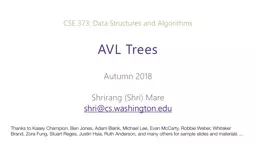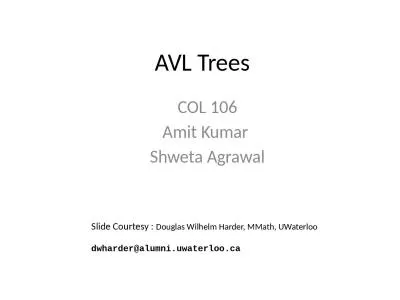PPT-Augmenting AVL trees
Author : trish-goza | Published Date : 2017-03-20
How weve thought about trees so far Good for determining ancestry Can be good for quickly finding an element Other kinds of uses Any thoughts Finding a minimummaximum
Presentation Embed Code
Download Presentation
Download Presentation The PPT/PDF document "Augmenting AVL trees" is the property of its rightful owner. Permission is granted to download and print the materials on this website for personal, non-commercial use only, and to display it on your personal computer provided you do not modify the materials and that you retain all copyright notices contained in the materials. By downloading content from our website, you accept the terms of this agreement.
Augmenting AVL trees: Transcript
Download Rules Of Document
"Augmenting AVL trees"The content belongs to its owner. You may download and print it for personal use, without modification, and keep all copyright notices. By downloading, you agree to these terms.
Related Documents

